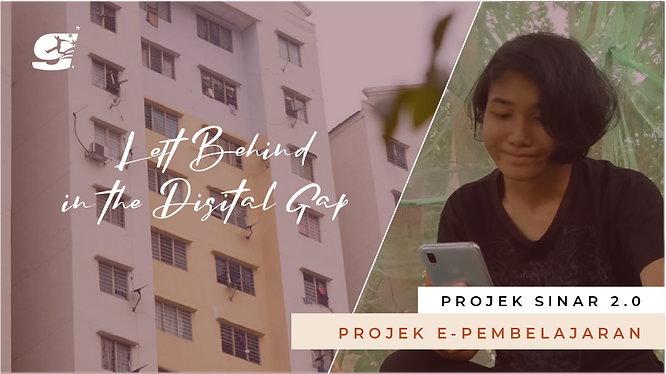Left Behind In The Digital Gap
The story of Veveonah Mosibin spending 24 hours in a tree in order to get data connection to take her exams was probably so unbelievable that the Deputy Multimedia and Communications Minister Datuk Zahidi Zainul Abidin mistook it as her doing it for Youtube views. However, once it was proven that she had taken exams that day, many praised Veveonah for being determined and responsible, and she was even awarded a full scholarship from Universiti Malaysia Sabah (UMS) to complete her foundation programme.
Veveonah's story is not out of the ordinary. In reality, there are many children who are left behind due to the digital gap. Families who do not have the finances to afford data & devices for their children's education are often the ones who fall into this category.

The “Learn from Home” initiative by YTL Foundation was like an answered prayer for B40 families because they could now register and get approved to receive a free phone with 120GB worth of data (10GB/month for 12 months) and get access to FrogAsia’s wide range of learning resources. As a first step in helping our community children bridge the digital gap, GG took this opportunity to register 46 families from the low-income communities so these children could also learn from home.
However, that was only the first step. We were now forced to ask ourselves the question of "What's next?" as we had, like most of the other NGOs, halted our on-ground programs and were deliberating how to continue our work without risking the health of the children and our volunteers. Were we ready to take on the task of moving our own education programs, our volunteers and the children online?
Honestly, the task was daunting as we had 390 children from 4 communities registered; and to provide connectivity to those who needed it required a lot of coordination. However, with the approval from our grant partners, the team pushed to give out Connectivity Packs consisting of a dongle & data that were distributed to the children's families in each community starting from early July, just before the schools reopened in the middle of the same month.

While this was being implemented, the Education team was also monitoring attendance of the students. Without the connectivity pack, the attendance rate was as low as 40%, with some children dropping out of the online session due to connectivity issues. Since then, the attendance has definitely increased as children were now equipped with the connectivity pack and could go online without any major hiccups. By the end of September, the average attendance was at 87%, a clear increase from where we first started.
"Agility is the ability to adapt and respond to change. Agile organisations view change as an opportunity, not a threat." - Jim Highsmith (Author & Thought Leader in Agile Project Management)
Focusing on the education needs we observed in the communities, the team turned the challenges into opportunities--learning opportunities. Through Projek E-Pembelajaran (PEP), we were able to see children online for our program even when they travelled back to their kampung (with chickens running around in the background!). We also saw an increase in parental involvement in the children's education as the parents helped set up the devices for their children's online classes; some even going to the extent of helping their children answer questions asked by the mentors. Bringing learning home has changed the dynamics of how the B40 community children used to learn and we hope that this new change will encourage the parents themselves to get involved in their children's education, a change that will have a greater impact on the children in years to come.





